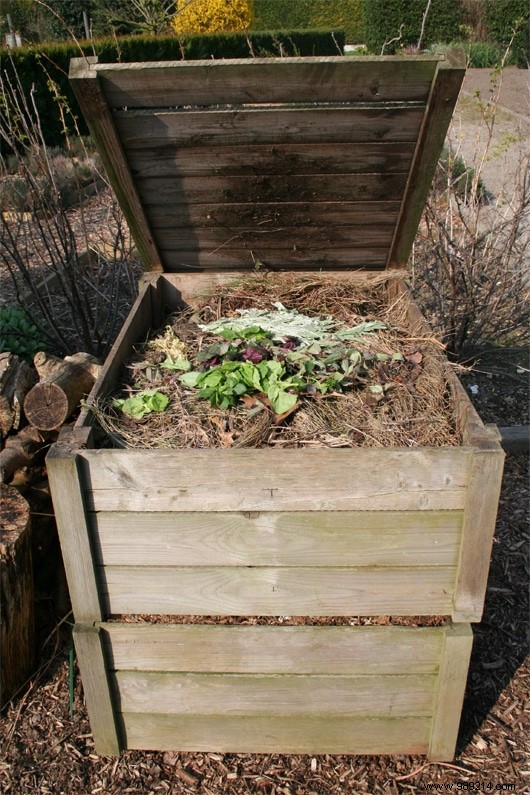Compost:implementation. Here is the best way to compost. Garden and kitchen waste is voluminous, and a source of well-being for soil life and therefore plants.
Composting is a natural process of transformation organic matter, i.e. what comes from living things (grass, root, leaf, animal excrement, ash, corpses of bugs, etc.), mineral matter, those on which plants feed. Making compost with waste gives a second life to waste, valorizes what is disposable anyway.
There are two groups of waste, green materials and the brunettes . Green ones, like grass (which is green, that's good!) are soft materials because they are full of water. Brown ones, like wood (which is brown, damn it!) but also straw, dry leaves... contain much less water.
The green ones are nitrogenous materials, the brown ones, rich in carbon. This is why they must be mixed to obtain a compostable set.
To remember, the 3 golden rules:mix materials, keep them moist but not soaked and air all from time to time, stirring the pile.

Yes, but... According to what is written in practically all books dealing with composting, it is specified not to compost diseased plants as well as herbs that have gone to seed. Precautionary principle ? Maybe, but what? Unless I am mistaken – and I can commit some – I have not found anywhere, experiments relating a greater infestation on plants which would have been fertilized with a compost made with plant matter parasitized by pathogenic fungi.
In other words, just because you composted diseased apple or rose leaves does not mean that the plants receiving the compost will be more vulnerable. Moreover, a plant well nourished with compost is less vulnerable to parasitic attacks. For me the risk is not greater. If your plant is weak or weakened, by poor nutrition or climatic hazards, you are facing a major risk of parasitism.
From experience, I put everything in the compost. It is true that I am doing it "correctly". This rises in temperature and the germs are destroyed, and the seeds lose their germinative power, insects and worms doing the rest.

Lack of air! The compost in short is too packed or too wet. We turn it over and things get back to normal quickly. With a fork, you empty the contents and by reloading the composter, the materials mix. Everything is aired out and the foul odor disappears.
Patience ! As soon as the result looks like commercial soil, when we can no longer recognize the primary sources. (banana peel or leek leaves).
At least, it is 6 months of waiting but more often the whole year or even more if the pile dries up along the way, and/or the brown materials such as kindling, are numerous. If the compost is used in autumn at the foot of trees or hedges, it can be used when the decomposition is not complete. The process will continue to be done, even spread out on the ground.
As soon as you have waste…
If you want to continue reading, this link will do you a favor